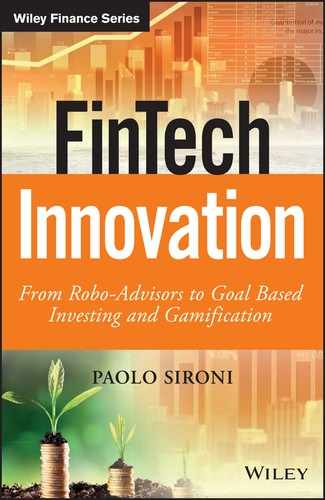Concluding Remarks
Working at the intersection between finance and technology is an incredible experience which requires patience and imagination because professionals operating in these fields have different skill sets and speak different languages. Most of this book was written during flights, after meetings with clients and prospects, banking technologists, senior advisors, friends, marketing officers, rampant entrepreneurs, colleagues, wealthy investors and families. I am indebted to all of them: after almost every meeting and conversation I was able to add a new piece to the puzzle. The chance to share ideas is the richest asset that innovators possess, as no mass market revolutionary vision can be the result of a thinker working in isolation. However, the world is noisy and it is not easy to discern a rationale in an irrational age, and provide a consistent reading of all the disruptive changes which are sweeping the wealth management industry. There is no innovation without a strategy for innovation, which this book, in a very humble way, has attempted to help craft. Most of this book invites the reader to review the underlying forces which foster transformation in wealth management, but and not only to look at the surface of the vibrant FinTech ecosystem; it invites the reader to see that TECH innovation brought forward by today's Robo-Advisors is incomplete without and equivalent FIN innovation about scenario analysis and portfolio construction. The book spells out a vision for the future of personal banking in which clients' needs take centre stage, gamification helps them learn how to make better investment decisions, and the industry thrives in a more symmetrical, transparent and risk-controlled landscape. The goal was to offer a narrative that was not prescriptive but sincerely descriptive and searching. Transforming a bank is not an easy task, and launching a FinTech entity is not only fun. But one thing that I learned during sailing classes in my formative years, is that one cannot always reach one's destination via a straight route. Often one needs to deviate from the target destination to gain speed, exploit the winds, and work out the currents. Recognizing the forces of nature and how they may help or hinder our progress is the first step. Attuning to the elements is the second, whether they are water, wind, temperature or the shape of the waves. Mastering the crew, the boat, and its technology is the last, although by no means the least important. The rest is passion and determination. And sometimes luck will help too! I hope that you enjoy your journey and that a heartfelt “good luck” from the author as well as his book aids you in achieving your goals.
